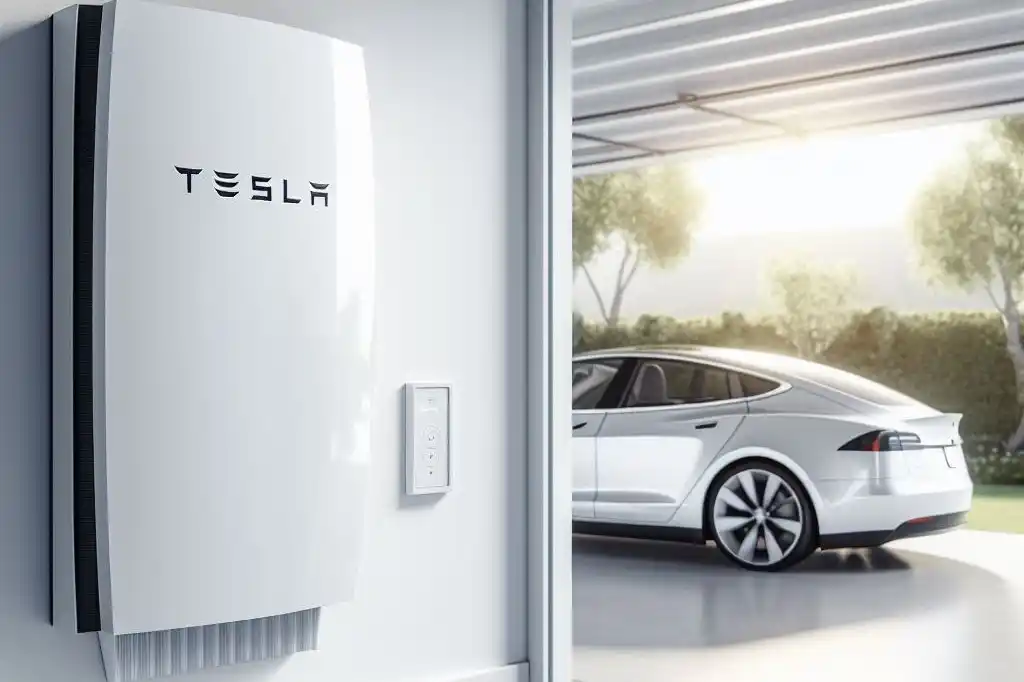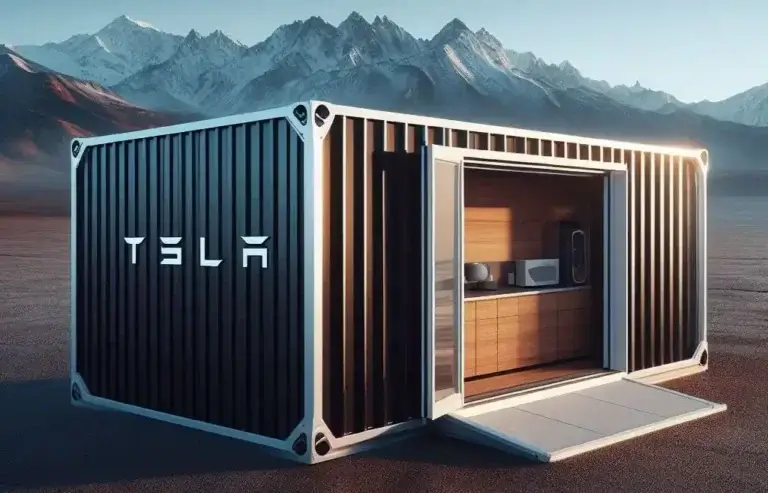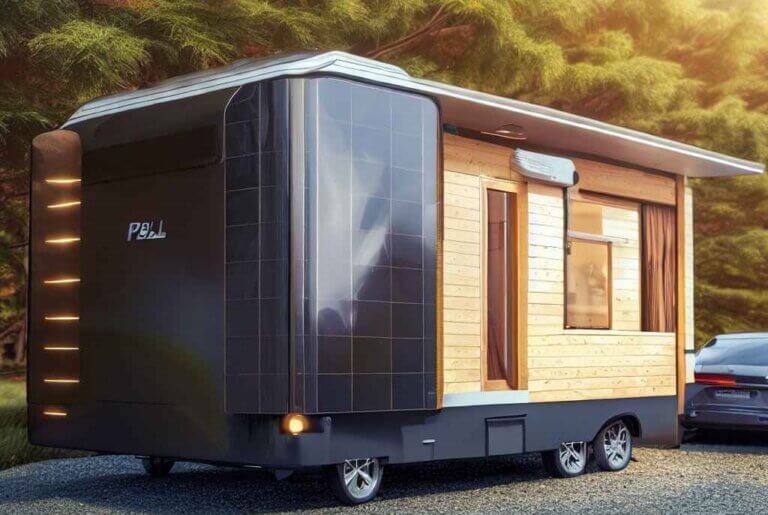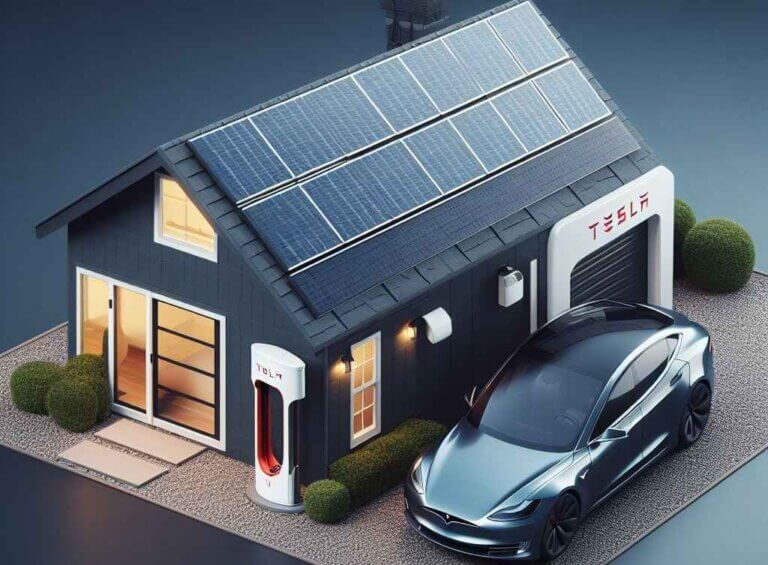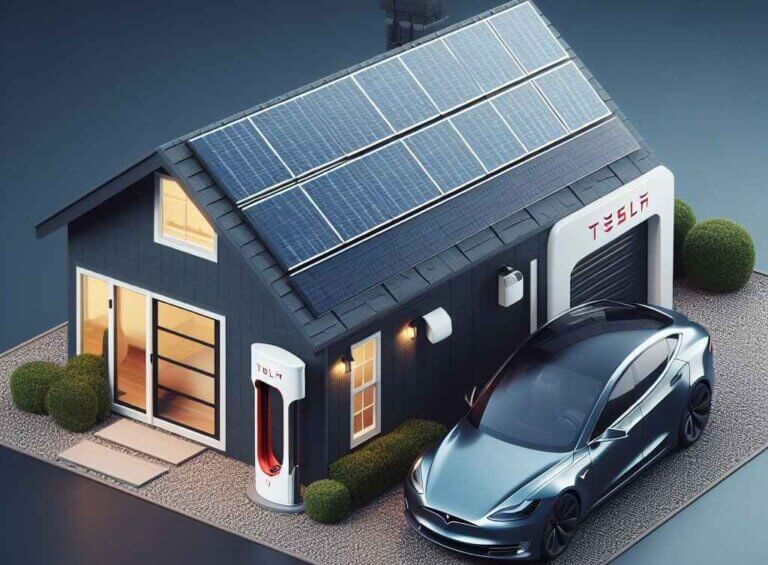How Tesla Powerwall Works: The Complete Guide to Powering Your Home With Solar Battery Storage
Are you considering adding a Tesla Powerwall battery system to your home? Want to better understand how Powerwall stores solar energy and powers your home?
In this complete guide, we’ll explain everything you need to know about how Tesla Powerwall works, its key features and capabilities, costs, warranty details, and more.
Why Add a Tesla Powerwall Battery System?
Adding a Powerwall Tesla battery system to your home solar system or as a standalone battery can provide major benefits, including:
- Energy independence and cost savings – Powerwall Tesla batteries allow you to store solar energy for use when electricity rates are highest, reducing reliance on the power grid and saving money on energy bills.
- Seamless backup power – Powerwall keeps your home powered in the event of grid outages and power failures. The system automatically detects outages and switches to backup power mode.
- Optimized solar self-consumption – For solar households, Powerwall can store excess solar production during the day for use at night. This increases the self-consumption of your solar energy.
- Environmental sustainability – By increasing the use of stored solar energy, Powerwall reduces your home’s carbon footprint.
Over one million Powerwalls have been installed worldwide. Keep reading to understand the technology and capabilities behind this innovative Tesla battery solution.
How Does Tesla Powerwall Work? Key Features and Capabilities
The Tesla Powerwall is a rechargeable lithium-ion home battery that is designed to store energy for solar self-consumption and backup power. Here are its core features:
Stores and Supplies Solar or Grid Energy
The basic function of Powerwall is to store energy from your solar panels or the grid when electricity rates are low. It then supplies this stored energy to power your home when needed.
During a grid failure, Powerwall will automatically detect the outage and enter backup power mode without any interruption.
Recharges From Solar or the Grid
Powerwall recharges whenever there is excess solar production that is not immediately used in your home. This energy gets stored in the battery for later use.
The system can also pull small amounts of grid electricity during off-peak hours to recharge when solar production is low.
Monitored and Controlled Via App
The Powerwall battery system and your household energy use can be monitored in real time using the Tesla mobile app.
You can view historical usage data, adjust Powerwall settings, and receive notifications if any issue arises.
Modular and Scalable Capacity
The Tesla Powerwall system uses individual battery units that can be installed together to create a custom energy storage system.
Start with one 14 kWh Powerwall battery and add additional units over time as your needs change or budgets allow.
Extended 10-Year Warranty
Every Powerwall Tesla battery comes with an industry-leading 10-year warranty. Tesla guarantees 85% remaining battery capacity after 10 years of operation under normal use conditions.
This provides exceptional long-term performance and return on investment from your battery system.
Designed for Reliability and Safety
Inside its sleek exterior, the Powerwall system features state-of-the-art battery cell technology, advanced thermal management, and 24/7 monitoring.
It is engineered with multiple levels of safety and reliability at the core of its design. Powerwall has proven safe and effective through over one million installations.
With this overview of how the core Powerwall technology works, let’s look at how it can integrate into your home.
How Does Powerwall Integrate With Solar Panels?
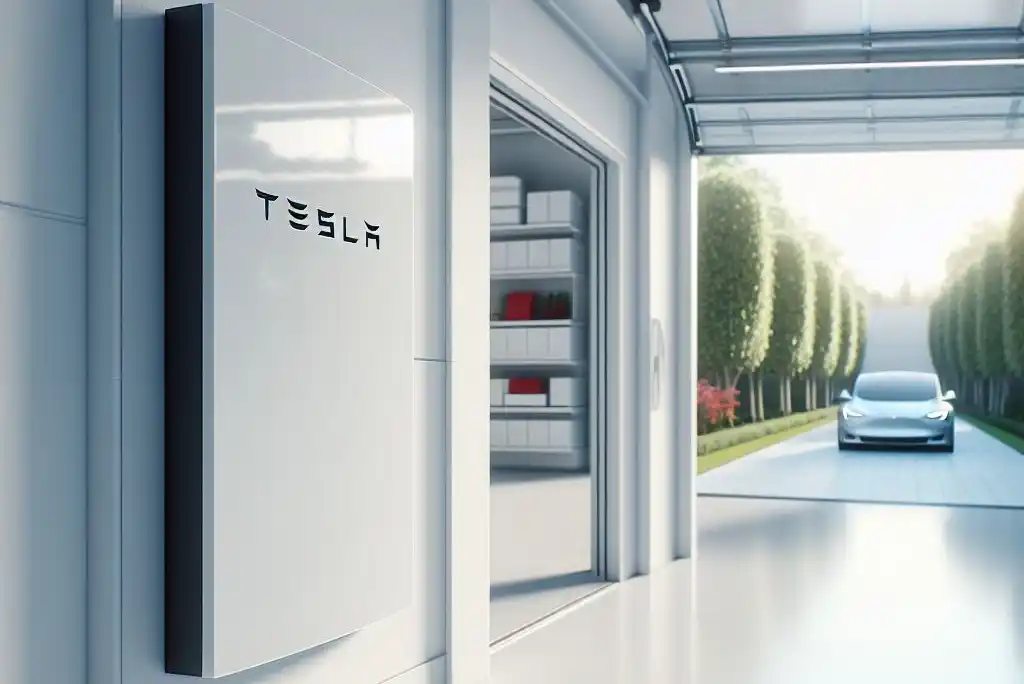
Adding Powerwall to an existing solar pv system allows you to get even more value from your panels.
It gives you a way to store extra solar production during the day for use at night. This increases solar self-consumption,saving money and maximizing your energy independence.
Here is the basic process Powerwall utilizes with home solar:
- Your solar panels produce energy during daylight hours
- As this solar electricity is generated, Powerwall stores any excess production that is not immediately used to power appliances and devices in your home
- In the evening when solar stops producing but your home still needs power, Powerwall supplies stored solar energy it captured during the day
- If any additional energy is needed overnight beyond the solar power stored in the battery, Powerwall will efficiently recharge off the grid during lower-cost overnight hours
- The system repeats this cycle daily – seamlessly storing solar production for nighttime use
This optimized storage and supply process gets you off the grid during high-rate peak evening hours when possible, saving you money.
And if the grid suffers an outage, Powerwall automatically switches into backup mode without losing power.
Let’s look at why adding energy storage makes solar PV even more cost-effective.
Why Add a Powerwall Battery to Your Solar System?
There are two main reasons savvy homeowners choose to add Powerwall to their existing solar panel systems:
1. Increase Solar Energy Utilization
One limitation of solar panels is that peak production happens during midday hours when your household may not need all that energy.
Much of that excess solar electricity simply gets exported back to the grid. Adding a solar battery allows you to effectively “store the sun” – keeping and using far more of the free energy your panels produce.
- Powerwall stores extra solar production during peak daylight hours
- This stored energy can then be used at night to power your home when the sun isn’t shining
- More energy kept onsite means greater energy independence
Without on-site battery storage, 70% or more of your solar energy may never benefit your home directly.
Adding a Powerwall can allow the utilization of 90% or more of the solar power generated.
2. Reduce Energy Costs
In addition to increasing energy independence, adding Powerwall to solar allows you to optimize use based on electric rates and “buy low, sell high”.
Specifically, Powerwall reduces costs in two ways:
- Store extra energy when rates are very low (midday)
- Supply stored energy when rates shoot up during peak evening hours
This strategic storage and supply during high and low rate periods saves homeowners money on their utility bills.
And if you face high demand charges from your electric company, using stored solar energy from Powerwall to reduce peak loads can multiply cost savings.
Between greater energy independence and strategic load shifting for cost optimization, adding energy storage capacity with Powerwall is a smart investment.
What About Adding Powerwall Without Solar Panels?
The Tesla Powerwall battery system offers compelling benefits even for homes without existing solar panels.
As a standalone home battery solution, Powerwall provides:
- Backup power during grid failures and outages
- Ability to store grid energy when rates are very low for use later when electricity is more expensive
- Opportunity to add solar panels down the road and get even more value from the already-installed Powerwall system
Even if you aren’t ready to go solar yet for any reason, you can achieve greater energy resiliency with Powerwall while laying the foundation for maximizing solar production in the future.
While the benefits multiply when combined with solar, Powerwall offers standalone perks too.
Either way, it is an investment in energy independence and peace of mind through reliable home energy storage.
How Many Powerwalls Will My Home Need?
Sizing your Powerwall energy storage system appropriately for your household’s needs is an important consideration.
The major factors that determine how many battery units your solar installer will recommend include:
- Energy usage – The more energy your household consumes daily, the greater your storage capacity needs to meet demand when solar production is low
- Existing solar system size – If adding Powerwall as an upgrade to solar panels, the number of panels and their rated output help determine the ideal battery capacity
- Level of independence desired – Are you seeking full home backup capability or mainly looking to increase solar utilization? Your goals for independence vs grid reliance impact the Powerwall units needed.
- Electricity rates & charges – Facing high peak rates, demand charges, or tiered pricing from your utility can make oversizing Powerwall for maximum independence worthwhile
With smart energy monitoring, your solar installer can assess historical usage and solar data to suggest the right Powerwall capacity.
Most homes begin with one or two Powerwall battery units (14-28 kWh). But the modular design makes scaling up system capacity easy in the future by adding more units as needed.
Now let’s take a closer look at this innovative battery technology at the core of the Powerwall system.
Inside Tesla Powerwall: Key Battery Components and How It Works
The Tesla Powerwall features advanced technology and engineering for next-generation home energy storage. Here are its key components and internal workings:
Lithium-Ion Battery Cells
At the core of the Powerwall battery system are thousands of small, lightweight lithium-ion battery cells.
Arranged into integrated modules, these cells have high energy density for incredible storage capacity in a compact, wall-mounted unit.
Battery Management System
Sophisticated monitoring and control electronics optimize performance and safety. This battery management system tracks voltage, current, and temperature at the individual cell level 24/7.
Liquid Cooling
Instead of traditional air cooling, Powerwall features liquid coolant that draws heat away from battery cells. This temperature regulation system maximizes cell performance and lifespan.
DC-to-AC Inverter
This component converts DC electricity from the battery bank into the usable AC power that lights and appliances utilize. Rapid response times provide uninterrupted switching to/from backup mode.
Gateway
The Powerwall gateway facilitates system communication, monitoring, and automatic software updates over WiFi. Control Powerwall settings right from the mobile app.
Advanced engineering across hardware and software gives Powerwall proven reliability and safety. Top-tier certifications vouch for its capabilities.
Next let’s explore Powerwall options, associated equipment, maintenance needs, and more.
Powerwall Battery Options: Different Models & Installation Components
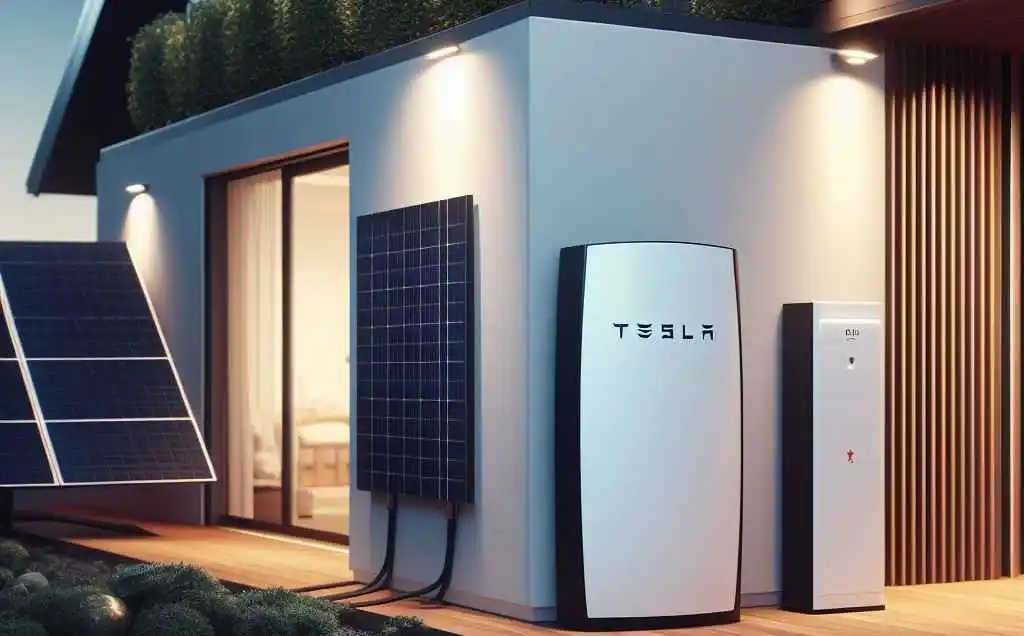
Tesla offers two main Powerwall models based on power output and storage capacity:
Powerwall+ is the latest model with expanded backup power delivery. It works as part of a solar plus storage system or standalone.
Either model integrates with optional equipment like these for whole-home capabilities:
- Backup Gateway – Facilitates push button transition to backup power mode; required for full off-grid integration
- Tesla Inverter – When your main electrical panel exceeds the power rating of the standard Powerwall inverter, this heavier-duty unit offers increased electrical output
- Subpanel – Secondary breaker box that distributes stored energy to selected home circuits like lights and outlets; used to right-size capacity based on partial home backup goals
Proper supporting hardware, smart inverter specs, and electrical panel capacity enable seamless Powerwall performance.
As for physical installation, Powerwall mounts securely on the wall of your garage or basement using a sturdy bracket. Laying the groundwork with your electrician to have adequate space and electrical infrastructure ahead of time makes installation smooth.
Little manual maintenance is required thanks to automated functionality and remote monitoring. Periodic inspection of connections and cleaning of air filters if in a dusty environment is wise.
Operating expenses are minimal given the 10+ year system lifespan and stellar warranty coverage as we’ll explore next.
Tesla Powerwall Warranty & Longevity
Among the most compelling Powerwall battery features is an industry-leading warranty and proven durability:
10-Year Comprehensive Warranty
The standard Powerwall warranty guarantees:
- 10 years or 37,800 cycles of normal use until battery capacity drops below 70%
- Over 85% energy capacity retention for 10 years under common operating conditions
Weatherproof Outdoor Rating
With an IP56 weatherproof rating, Powerwall functions in freezing winters, scorching summers, humidity, dust, and even hose-down water exposure.
Superior Longevity
Independent testing shows negligible Powerwall battery degradation even after over 4,000 cycles and 600 days of continuous runtime.
By all measures, Powerwall sets the bar for reliable home energy storage performance over an exceptionally long effective lifespan. Carefree operation and exceptional ROI result.
Next let’s explore the possibilities of using your Tesla Powerwall system.
How to Use Powerwall: Features and Functionality
Installing a Powerwall battery enables new ways to power your home, optimize energy use, and take control of electricity costs:
Seamless Backup Power
In case of grid failure, Powerwall automatically supplies backup energy to keep lights, appliances, and devices running without interruption.
Increased Solar Utilization
Store extra solar production to power your home at night with clean energy instead of pulling from the grid.
Charge Targeting / Time-Based Control
Set schedules, modes, and charging priorities so your battery charges and discharges at optimal times based on solar availability, energy rates, and goals.
Grid Services Participation
Enroll in utility grid services programs that pay you to share stored capacity at times of peak grid demand.
Monitoring via Mobile App
View real-time energy use data, battery charge levels, historical system performance, notifications, and access settings conveniently through the Tesla app.
This level of visibility and automation makes getting maximum value from your Powerwall system straightforward.
Of course, upfront purchase and installation costs play a role in the value equation as well.
Tesla Powerwall Cost: Purchase Price, Incentives & Installation
The Tesla Powerwall battery delivers exceptional capabilities and longevity. Like any home upgrade, there are upfront equipment, installation, and ongoing costs to factor in:
Equipment Cost
- $11,500+ per Powerwall battery unit (14 kWh capacity)
- Supporting equipment like gateway, inverter, subpanel extra
Installation Cost
- Around $2,500 per battery unit on average (labor, materials)
- Existing electrical infrastructure impacts the effort
Electricity Usage Fees
- Small parasitic load to power communication systems and battery management
- Grid energy for recharging if solar production is insufficient
Incentives & Rebates
- 26% Federal solar tax credit through 2032
- State/utility/non-profit rebates where available
With incentives and the value of resilience, bill savings, and environmental gains factored in, Powerwall delivers strong ROI. Costs drop and capabilities improve each year too.
Powerwall Payback Period: Factors and Calculations
Determining the Powerwall system payback period helps set ROI expectations. The key factors include:
Electricity Cost Savings
- Reduced peak demand charges
- Lower time-of-use rates from stored solar energy
- Avoided outage losses
Solar Incentives & Rebates
- Federal, state and utility tax credits and rebates
Average Solar Production
- More kWh stored = greater savings
Escalating Electricity Rates
- Bill savings compound faster over time
Powerwall Purchase & Install Price
- System equipment and labor costs
Crunching the numbers for your situation is key. But most solar sites see complete payback on adding Powerwall within 5-7 years thanks to recurring utility savings and incentives.
Financial projections from an installer help make the decision.
Once installed, using Powerwall to its full potential requires answering common questions many homeowners have.
Frequently Asked Questions About Powerwall
Some of the common Powerwall battery questions we hear include:
Can Powerwall power my whole house?
Powerwall can power either selected backed-up loads or your full home during an outage. Installing multiple units or equipment like Tesla’s backup gateway enables whole-home backup.
Is it worth buying Powerwall if I don’t have solar?
Yes, Powerwall still provides resilient backup power and optimizes the use of grid energy for cost savings without solar. Add panels later for even more benefits.
How long does a Powerwall power a house?
Duration varies tremendously based on household energy use, the number of Powerwalls installed, and whether solar recharges the battery. Most homes get 12-24 hours from a single Powerwall unit.
Can I install Powerwall myself?
Tesla recommends professional installation for correct integration with household electrical infrastructure, maximum safety, and preserving warranty protections.
How is Tesla Powerwall maintenance done?
Little manual user maintenance is required. Powerwall runs automatic self-checks with remote software updates as needed. Periodically checking cabinet filters and physical connections is wise.
Does Powerwall work with a portable generator?
Yes, you can use a generator to recharge Powerwall, enabling stored energy to share the load so generator runtime is minimized. This expands backup duration.
Reaching out to a qualified solar battery installer remains the best bet to get additional Powerwall questions answered.
Power Your Home When the Power Goes Out
Severe weather can cause power failures that leave you powerless. Installing the Tesla Powerwall system ensures you stay powered on even if the grid goes down.
Its automatic integration with solar panels and your home’s electrical system provides seamless switching to a backup battery supply. Keep your refrigerator, lights, Wi-Fi, and other essentials running uninterrupted.
Slash Your Electric Bills
The average price homeowners pay for electricity rises by about 3.5% per year over the long run. Many utilities hit you with demand charges, peak usage fees, and higher winter or summer rates too.
Charging a Tesla Powerwall with cheap solar energy or overnight off-peak grid rates lets you supply stored power back to your home when rates spike. Cut your electric bills substantially through strategic storage and use.
Reduce Your Environmental Impact
Burning fossil fuels impacts air quality and emits greenhouse gases that accelerate climate change. However, storing clean energy from solar panels or the grid during green-friendly generation periods minimizes environmental harm.
Powerwall also enables the effective use of intermittent renewable sources by solving the supply/demand timing mismatch. Go greener without disruption or inflated costs.
Powerwall is a Smart Grid Asset
Your utility may offer incentives and bill credits for enrolling your Tesla Powerwall system in grid services programs too. By sharing your stored capacity to help balance overall supply and demand on cue, utilities reward your flexibility and grid support.
Experience the Tesla Difference
With category-defining battery technology packed inside a compact, wall-mounted unit, the Tesla Powerwall offers advantages most competitors can’t match at any price point. Backed by Tesla’s stellar track record and premium tier warranties, experience next-gen home energy innovation.
Conclusion
Adding a Tesla Powerwall energy storage system alongside solar or as a standalone upgrade unlocks game-changing resilience, sustainability, and long-term savings.
Now you know how Powerwall cost-effectively stores and supplies solar or grid energy to slash electric bills, power through outages with ease and pair perfectly with existing or future solar panels.
Get your custom quote for Tesla Powerwall purchase and installation costs based on your household’s unique needs and eligibility for solar incentives. Then start reaping the benefits of your own innovative battery backup solution for decades to come.

